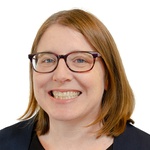Scooters Did Take Over Last Year

Rachid Jalayanadeja/Shutterstock
A new report shows use of electric scooters surged past docked bike share.
Depending on the city, it can feel like the scooters clustered on sidewalks are taking over the downtown landscape. New data from the National Association of City Transportation Officials shows that the emergence of e-scooters across the country was indeed dramatic, driving the more than doubling last year in the use of shared bikes and scooters.
In 2018, people took 36.5 million trips on shared bicycles rented from docking stations. Even more people used electric scooters, with 38.5 million trips calculated by NACTO.
For the most part, companies are doing away with offering dockless regular bikes, although e-bikes are popping up in some cities and where they exist are more popular than pedal ones, the report found. There were 6.5 million trips last year taken on e-bikes, most of them in dockless arrangements.

All of these so-called “micromobility” options have been heralded as a way to make transit more feasible for city residents, as they can hop on a bike or scooter for the last leg of a trip if a stop isn’t right at their final destination. With enough availability, shared micromobility could also become the primary way some people get around their cities.
The pioneer of shared mobility—bike share programs with bicycles stored at stations—saw a 9% increase in use from 2017. Ridership increased at least in part because of system expansions, with the programs in Washington, D.C., Boston and California’s Bay Area all adding stations, the report says.
But this concept’s popularity is mostly limited to a few places, with six cities responsible for 84% of bike share trips in 2018. While e-scooters have shown up in a lot of cities, that sector also was concentrated, with the report finding that 40% of scooter trips took place in Los Angeles, San Diego and Austin. The report looked at bike share cities where systems had more than 150 bikes, while counting scooter use in top 100 cities by population where there were systems with more than 150 scooters.
One caveat with these services is that other reports have found they don’t necessarily reach all communities, even in cities with robust networks. An evaluation of Capital Bikeshare in Washington by the Urban Institute found that even after the service expanded into predominately low-income and black neighborhoods, it didn’t get much use by community members compared with the rest of the city. One suggestion in that report was to make information about discounts and payment options that don't involve credit cards more readily available, as well as better engagement of residents in expansion discussions.
Vineet Gupta, director of policy and planning with the Boston Transportation Department, emphasized that his city’s program is connecting more and more people. “With last year’s expansion, approximately 85% of our residents can now walk to a public bike share station in 5-7 minutes, which means that they have a reliable, low-cost option for reaching jobs, educational opportunities, and open space,” he said in a statement.

For their part, NATCO found that people seem to use scooters and bike share differently, with bike users more likely to ride to get to work and scooting more tilted toward recreational activities. Scooter use climbed over the weekend, while people were more likely to hop in a bike share at rush hour, the report found.
Laura Magg is the Managing Editor of Route Fifty and is based in Washington, D.C.
NEXT STORY: DARPA takes autopilot to a new level






